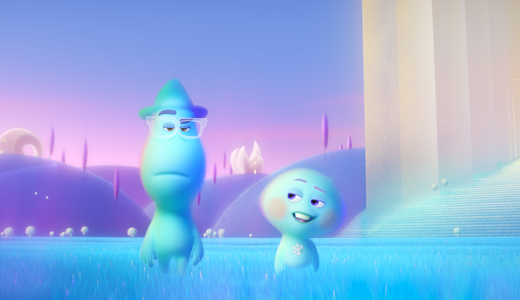You can’t fault Pixar for its ambition.
While most animated movies are plainly geared toward children, Pixar’s not content to be a babysitter. Sure, the Disney-owned studio wants to make the kids laugh. But for nearly three decades, the folks at Pixar have been just as interested in the adults in the audience, and the topics they tackle seem to grow weightier with each new release.
Director Pete Docter is arguably Pixar’s most ambitious creator. His first directorial effort, Monsters, Inc., dealt with nothing less than love and fear. His second, Up, tackled grief and moving on from that grief. The third, Inside Out, was an exploration of the child’s brain. All were all but guaranteed to make kids laugh and adults cry.
But with Soul—being released on Disney+ on Christmas Day—Docter and his team go beyond the mind and into (as the title would suggest) the soul. That involves a trip into strange, existential planes, and it encompasses ruminations on the afterlife and (especially) the beforelife, in order to talk about life itself.
That premise obviously brings with it a whole host of potential theological sticking points, as we noted in our review. But during a roundtable discussion with Docter and the film’s producer, Dana Murray, the director was well aware of the potential pitfalls.
“The afterlife was, especially, like ‘Danger, danger, danger!’” Docter said. “You know, there’s a lot of pitfalls and things that we could have stuck our foot in by accident. [When] we did start the whole process, I think, one of the first things we did was talk to a lot of different religious consultants—pastors, theologians, rabbis … and we just tried to understand from every angle how people across time have understood the soul, and what does it look like. Are there any clues to us in terms of the design that we can use.”
The film avoids showing “heaven” or the afterlife proper. All we see is a sloped conveyor belt taking the newly departed to a blinding white light. That was by design. But Docter admits that, early on, he thought about including the voice of God.
He says the movie is really about meaning: about why we draw breath in the first place. “Why am I here? Why am I not getting what I want?” Docter says. “It’s sort of a Job-like story.” And in the book of Job, God speaks a lot. So Docter thought it’d be fun to have God speak here, too—but using a variety of different voices: Male and female, old and young, pulled from every race and ethnicity.
“Not a good idea,” Murray said.
“Yeah, that was one of the first things to [be] cut, and probably good [that it was]. Because you know the characters, like us, have to figure things out themselves, as opposed to being taught.”
Other challenges came from the culture that Soul takes place in. The lead character, Joe Gardener, is a black jazz musician—the first African-American protagonist in the Pixar canon. That character was part of a world that Docter wasn’t that familiar with.
“I think our initial concern was about religion,” Docter says. “The longer-term concern, the bigger one, became more about race and representing culture, because there are a lot of pitfalls and, you know, things we didn’t even know we didn’t know.”
More consultants helped guide that process, and Docter and the team had a chance to talk with some “living legends” like Herbie Hancock and Quincy Jones, which Docter says was “mind blowing.”
“It was a huge responsibility,” Docter says. “We knew that we wanted to portray this life of this man as accurately as we could, not just because it’s the right thing to do, but because the movie gets better. You know, when you talk about those things in an accurate, specific way, strangely, I think, [the story] becomes more universal, the more specific [it gets].”
Soul was originally intended to receive the traditional theatrical treatment: a big movie release on thousands of screens across the country. The coronavirus changed that plan. Disney and Pixar opted to roll the movie out to Disney+, instead. But in some ways, the film addresses issues that much of the world is dealing with during COVID-19: What does it mean to not just live, but live well? The two characters, after all, are in kind of a holding pattern—just as most of us are.
“When we started [this process] five years ago, the world was a different place,” Docter says. “But a lot of the things that we’re investigating—basically, why are we waking up in the morning, what are we doing with our time—those, I think are things that we’re maybe asking ourselves more than we do in normal times.”
Docter believes that it’s important to ask those questions. And he thinks that maybe we should ask them of ourselves more often. “That was our hope, really, from the get-go,” Docter says. “It’s not like we ever hoped to answer the question of ‘What is life all about?’ That’s ridiculous to think you could. But at the very least, we hope we would incite some good conversations and make people go, ‘OK, we got to go get some coffee and talk about this.’”







Recent Comments